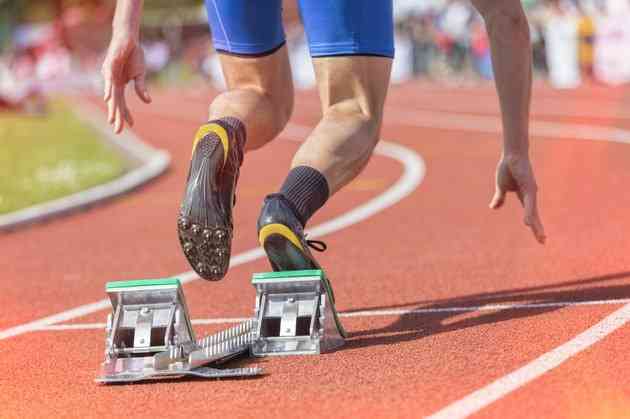Sprinting Techniques for Short Legs

Traditionally, the awards in competitive sprinting have gone to runners with smaller frames. Tall sprinters have historically been considered to have a disadvantage, as Edward McClelland reports for "Slate," covering the unusual success of 6-foot-5 sprinter, Usain Bolt. Nonetheless, as indicated by Bolt's performance, runners of various heights can succeed in the running style. If you're concerned about using your body type to the greatest advantage, consult with a coach for personalized instruction.
 Two sprinters are taking off from the starting line on a track. (Image: GlebStock/iStock/Getty Images)
Two sprinters are taking off from the starting line on a track. (Image: GlebStock/iStock/Getty Images)Height and Stride
In general, the taller you are, the longer your legs and the larger your stride. As a result, a tall sprinter like Jamaican Olympic medalist Usain Bolt can go through the 100-yard event in 40 strides, while shorter competitors may require 45 to 50. However, the fastest performance in a sprint event isn't simply a matter of stride length; it depends on both the number of strides and the speed of each individual stride. A shorter runner who's trained to use proper form may smoothly run more strides in less time than the taller competitor.
Height and Running Form
For a short sprinter to pump through more strides in less time, it's necessary to optimize a number of factors, primarily centered around form. For example, if a tall competitor with strong muscles adopts a position with the center of balance too far forward, the form will work against forward movement. Despite having long, strong leg muscles, the runner will reduce overall running speed by exacting a subtle braking effect with each footfall.
Height and Strength
While form can have a dramatic effect on sprinting, it doesn't displace the importance of strength. More than distance runners, sprinters need enough strength to generate an initial propulsive movement. World-class competitive sprinters generally aren't extremely tall or extremely short. Sprinters do generally have a slightly lower body mass than the general population or athletes in most other sports, however. Given that sprinters of different heights have slightly different natural stride patterns, work on strength development to optimize stride.
General Tips for Short Sprinters
In the most basic sense, acceleration is directly proportional to force and inversely proportional to body mass. Short sprinters are already at an advantage over lankier competitors, with their smaller body mass, provided that they can generate sufficient force. Focused strength training can help a smaller runner generate more force. Improving form is equally vital; working on details such as foot position during push-off or arm movement during each stride optimizes the way muscular strength propels a runner forward.



